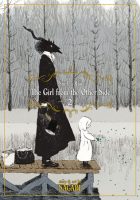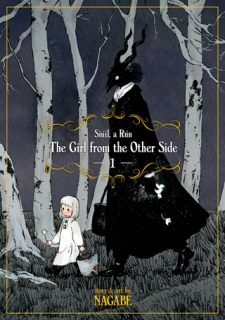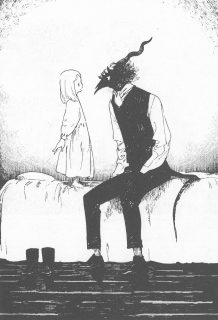My News and Reviews
For everyone following along with Experiments in Manga, it’s probably obvious that things are running a little behind here right now. I intended to post an in-depth review last week (actually, two weeks ago), but life intervened. While I did manage to make some significant progress, the review is just not quite ready. However, I can confidently say that I’ll be able to post it later this week. (For real, this time!) There’s this month’s manga giveaway to look forward to on Wednesday, as well. So, after a couple of weeks of quiet, this week will be relatively busy here at the blog.
Quick Takes
 Descending Stories: Showa Genroku Rakugo Shinju, Volumes 2-3 by Haruko Kumota. Although rakugo isn’t completely unknown to me (I’ve even seen a live performance), most of my exposure to the art form has been through reading Descending Stories. The first volume introduced Kyoji, a young man who is given the name of Yotaro as part of his apprenticeship under a Yakumo, a highly-respected rakugo artist. While Yotaro does put hard work into learning the craft, his successes can more often be attributed to his natural charisma and earnest enthusiasm than actual technique. Yakumo’s stage presence and approach to rakugo is dramatically different. With the second and third volumes, Descending Stories begins to explore Yakumo’s backstory in greater detail. He details his own coming of age and relationship with and to rakugo. Yakumo, like Yotaro, struggled to find a way express himself through performance, bringing him into conflict with those closest to him. Descending Stories is an engrossing drama that becomes more compelling with each volume; I definitely plan on reading more of the series.
Descending Stories: Showa Genroku Rakugo Shinju, Volumes 2-3 by Haruko Kumota. Although rakugo isn’t completely unknown to me (I’ve even seen a live performance), most of my exposure to the art form has been through reading Descending Stories. The first volume introduced Kyoji, a young man who is given the name of Yotaro as part of his apprenticeship under a Yakumo, a highly-respected rakugo artist. While Yotaro does put hard work into learning the craft, his successes can more often be attributed to his natural charisma and earnest enthusiasm than actual technique. Yakumo’s stage presence and approach to rakugo is dramatically different. With the second and third volumes, Descending Stories begins to explore Yakumo’s backstory in greater detail. He details his own coming of age and relationship with and to rakugo. Yakumo, like Yotaro, struggled to find a way express himself through performance, bringing him into conflict with those closest to him. Descending Stories is an engrossing drama that becomes more compelling with each volume; I definitely plan on reading more of the series.
 The Girl from the Other Side: Siúil, a Rún, Volumes 2-3 by Nagabe. One of the most beautiful, unusual, and unsettling manga that I’ve encountered this year is Nagabe’s The Girl from the Other Side. The artwork in particular is striking, but the series as a whole is incredibly atmospheric, a chilling fairytale-like story that unfolds at a tantalizingly slow pace with bursts of shocking violence and heartbreak. At times The Girl from the Other Side can be delightfully charming, but a sense of foreboding is a constant shadow. Shiva was abandoned to the Outside, perhaps for her own sake or perhaps for the sake of others. Now, however, she is being deliberately sought out to be brought back Inside. But while for the time being Shiva’s life may no longer be in immediate danger, her innocence is still poised to be shattered. Teacher continues to guard and protect her even as the curse, and the human response to that curse, threatens to destroy the two of them and their world. With both exceptional artwork and storytelling, The Girl from the Other Side is easily one of my favorite manga currently being released in English.
The Girl from the Other Side: Siúil, a Rún, Volumes 2-3 by Nagabe. One of the most beautiful, unusual, and unsettling manga that I’ve encountered this year is Nagabe’s The Girl from the Other Side. The artwork in particular is striking, but the series as a whole is incredibly atmospheric, a chilling fairytale-like story that unfolds at a tantalizingly slow pace with bursts of shocking violence and heartbreak. At times The Girl from the Other Side can be delightfully charming, but a sense of foreboding is a constant shadow. Shiva was abandoned to the Outside, perhaps for her own sake or perhaps for the sake of others. Now, however, she is being deliberately sought out to be brought back Inside. But while for the time being Shiva’s life may no longer be in immediate danger, her innocence is still poised to be shattered. Teacher continues to guard and protect her even as the curse, and the human response to that curse, threatens to destroy the two of them and their world. With both exceptional artwork and storytelling, The Girl from the Other Side is easily one of my favorite manga currently being released in English.


